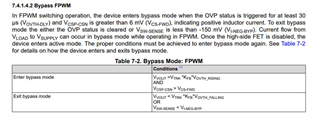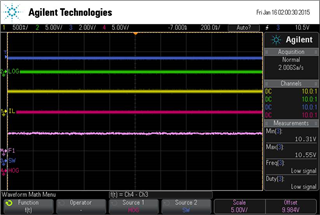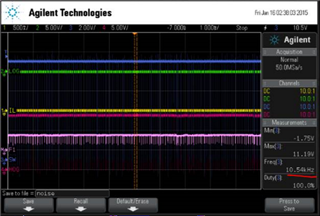Hi team,
I have a question about LM51231, please help me, thank you!
The input setting is 10.4v, the output is 10v, and it is configured in FPWM mode. The actual tested load current of CH1 IL in the picture is 500mA, and the sense resistor is 3mohm. KFB 20, VTRK 0.5v, according to the manual, it does not meet the enter bypass conditions, but it works in bypass mode. Why is this? Is it normal?




